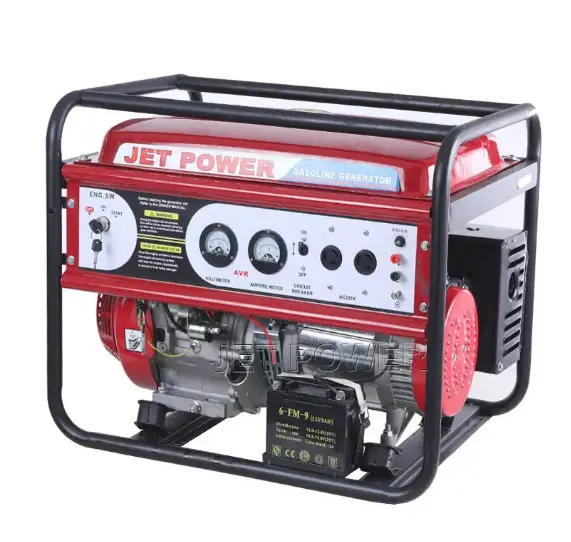Jet Power Generator, the professional power equipment diesel generator manufacturer
E-mail: info@jet-power.cn +86-13696836615
Principles of Power Equipment Types
In today's energy-driven world, power equipment is the unsung hero behind the electricity that powers our daily lives. From the factory floor to the solar panels on our roofs, these devices ensure that energy is generated, distributed, and managed reliably. Understanding the principles and types of power equipment is essential for anyone interested in modern energy systems.
The Evolution of Power Equipment
Power equipment has evolved significantly over time. Early inventions like the steam turbine laid the groundwork for modern technology. Advancements in materials and manufacturing have revolutionized its design, making it more efficient and reliable. Today, power equipment is at the heart of smart grids and renewable energy systems, adapting to meet the demands of a rapidly changing world.

Classification of Power Equipment
Power equipment is categorized into several types, each serving distinct purposes:
1. Generation Equipment: Includes turbines and transformers, crucial for converting mechanical energy into electrical energy.
2. Transmission and Distribution Equipment: Comprises power lines and circuit breakers, essential for transporting electricity across vast distances.
3. Protection and Control Systems: Features relays and SCADA systems, vital for maintaining grid stability.
4. Energy Storage Solutions: Includes batteries and inverters, playing a key role in managing renewable energy sources.
!
Each category is integral to the energy production and distribution system, with specific applications in industries like manufacturing and renewable energy.
Functional Principles
Power equipment operates based on core principles:
- Energy Conversion: Transforming mechanical energy into electrical energy and vice versa.
- Generation and Transmission: Converting and transporting energy efficiently.
- Load Balancing and Control: Adjusting supply to meet demand, ensuring grid stability.
- Safety and Reliability: Incorporating safety mechanisms to prevent failures and ensure continuous operation.
Real-World Application Example: Renewable Energy
Consider a large solar farm. The solar panels convert sunlight into electrical energy through photovoltaic technology (energy conversion). This energy is then distributed through power lines (transmission and distribution) to the grid. SCADA systems monitor and control the entire process, ensuring stability (protection and control). Batteries store excess energy for when the sun doesnt shine, making the system more resilient (energy storage).
Materials and Manufacturing
The choice of materials is crucial for power equipment's performance. Metals like steel and aluminum are common due to their strength, while advanced materials like composites enhance reliability. Manufacturers use precision engineering and quality control to ensure top performance.
Example of Advanced Materials
Advanced composites like carbon fiber are used in turbine blades to reduce weight and increase efficiency. Manufacturers such as General Electric and Siemens supply these high-tech components.
Case Studies
Empirical evidence from real-world applications highlights the effectiveness of power equipment. For instance, a German wind farm successfully integrated various types of power equipment, demonstrating how modern wind turbines can efficiently convert wind energy into electrical power and how advanced control systems maintain grid stability.
Future Trends
Emerging trends like smart grids and digitalization are transforming power equipment. Integration of renewable sources and advanced materials promise efficiency and sustainability. Challenges and opportunities in these areas shape the future, with regulatory frameworks playing a key role in industry growth.
The Future of Power Equipment
Understanding the principles of power equipment types is crucial for shaping the future of energy systems. As the field evolves, continuous learning and adaptation will drive innovation, transforming the way we generate, distribute, and use electricity. By harnessing the latest advancements, we can build a more sustainable and reliable energy future.
QUICK LINKS
PRODUCT
Contact Us
Sale Tel: +86-13696836615 (Whatsapp/Wechat)
Sale Fax: +86-591-83211428
E-mail: info@jet-power.cn
Factory Address: Industrial park,Tiehu, Fuan City, Fujian, China
